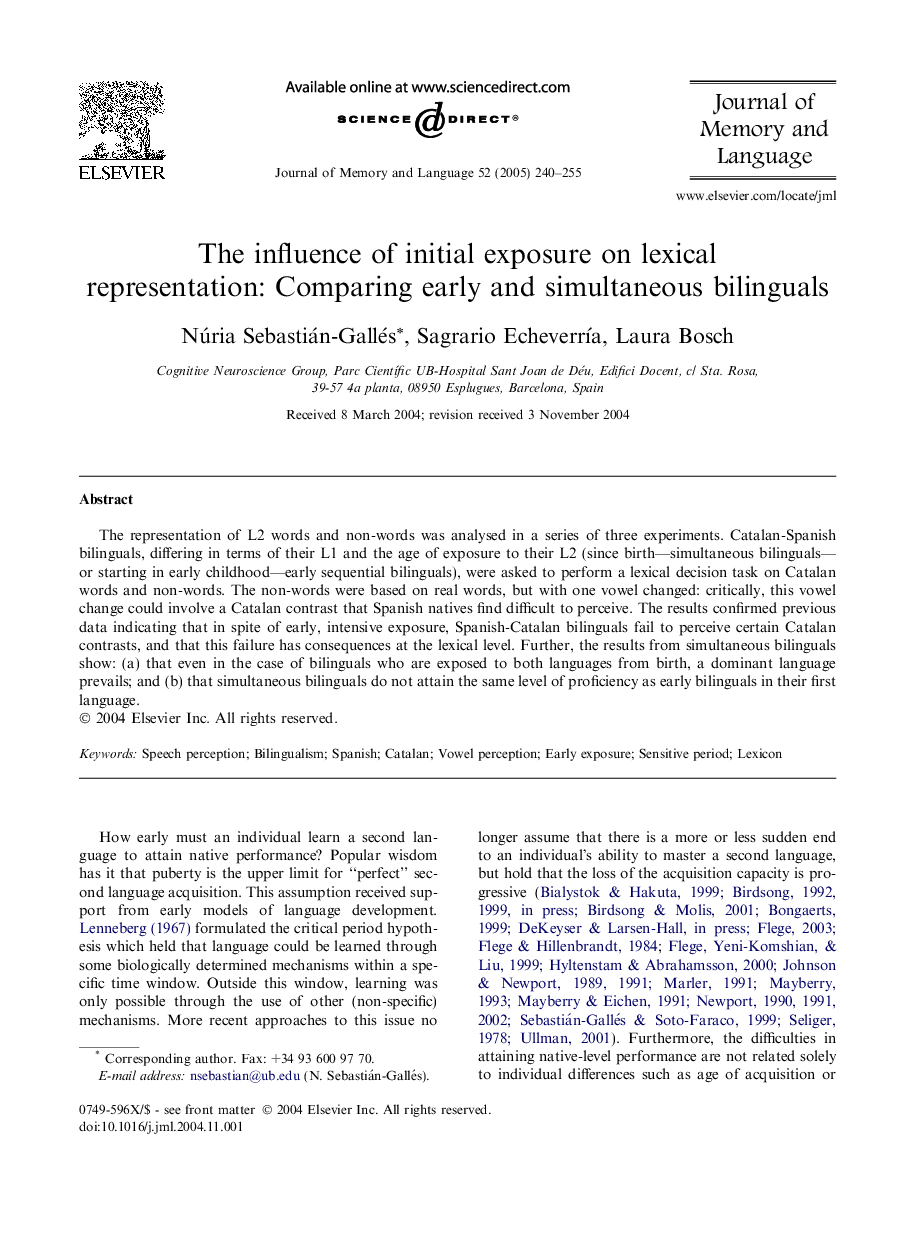| Article ID | Journal | Published Year | Pages | File Type |
|---|---|---|---|---|
| 10459839 | Journal of Memory and Language | 2005 | 16 Pages |
Abstract
The representation of L2 words and non-words was analysed in a series of three experiments. Catalan-Spanish bilinguals, differing in terms of their L1 and the age of exposure to their L2 (since birth-simultaneous bilinguals-or starting in early childhood-early sequential bilinguals), were asked to perform a lexical decision task on Catalan words and non-words. The non-words were based on real words, but with one vowel changed: critically, this vowel change could involve a Catalan contrast that Spanish natives find difficult to perceive. The results confirmed previous data indicating that in spite of early, intensive exposure, Spanish-Catalan bilinguals fail to perceive certain Catalan contrasts, and that this failure has consequences at the lexical level. Further, the results from simultaneous bilinguals show: (a) that even in the case of bilinguals who are exposed to both languages from birth, a dominant language prevails; and (b) that simultaneous bilinguals do not attain the same level of proficiency as early bilinguals in their first language.
Keywords
Related Topics
Life Sciences
Neuroscience
Cognitive Neuroscience
Authors
Núria Sebastián-Gallés, Sagrario EcheverrÃa, Laura Bosch,
